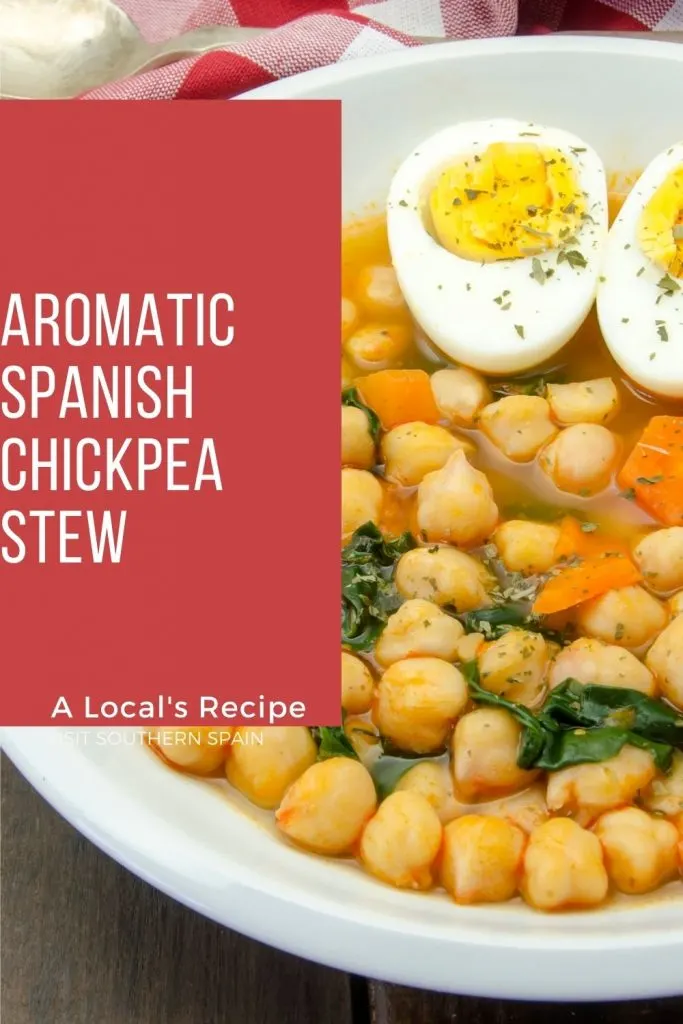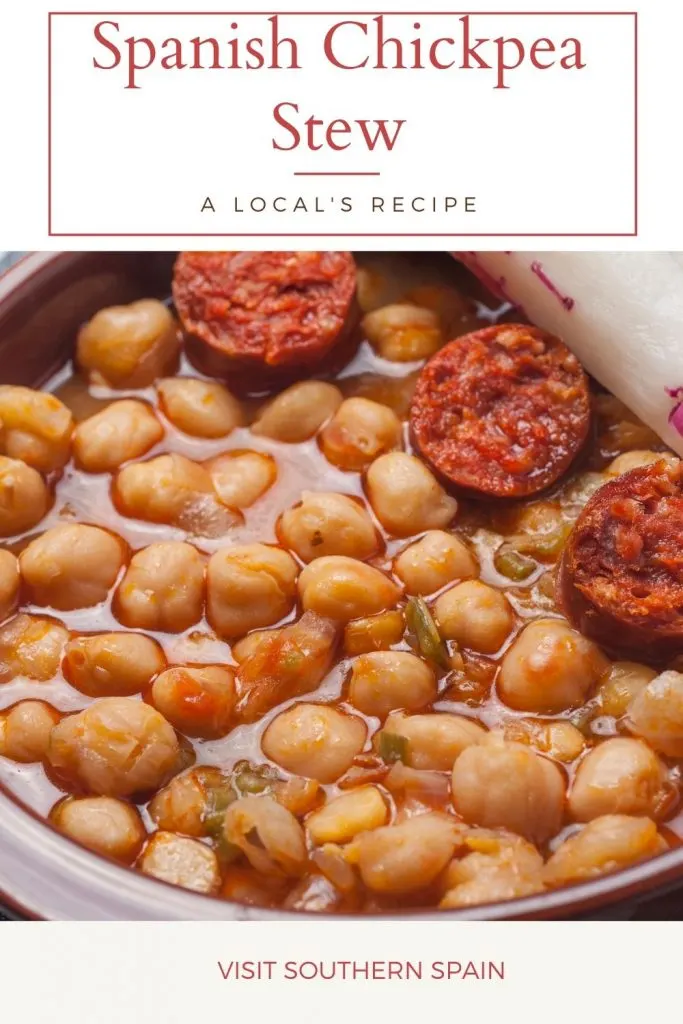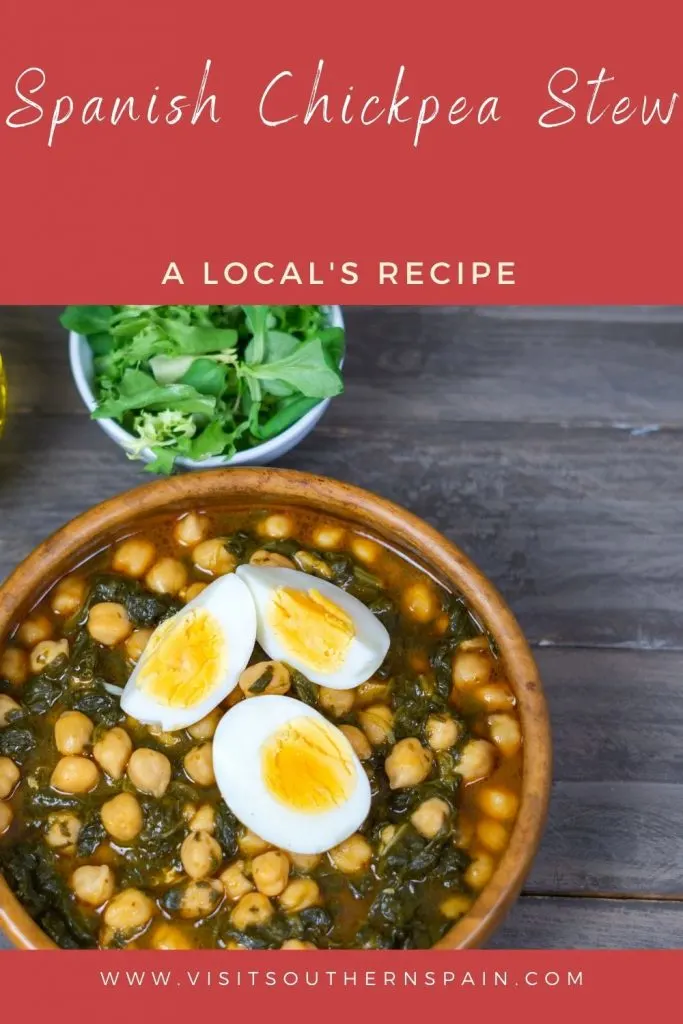Some Spanish main dishes make you want to travel just by tasting them or smelling their aroma. Just one spoonful of Spanish chickpea stew can take you to the south of Spain in an instant.
This recipe is extremely popular due to its simplicity and the fact that the result is a delicious and heartwarming stew.
However, it is not a dish that has reached many countries in other parts of the world, and that is why we want to share it here with you.
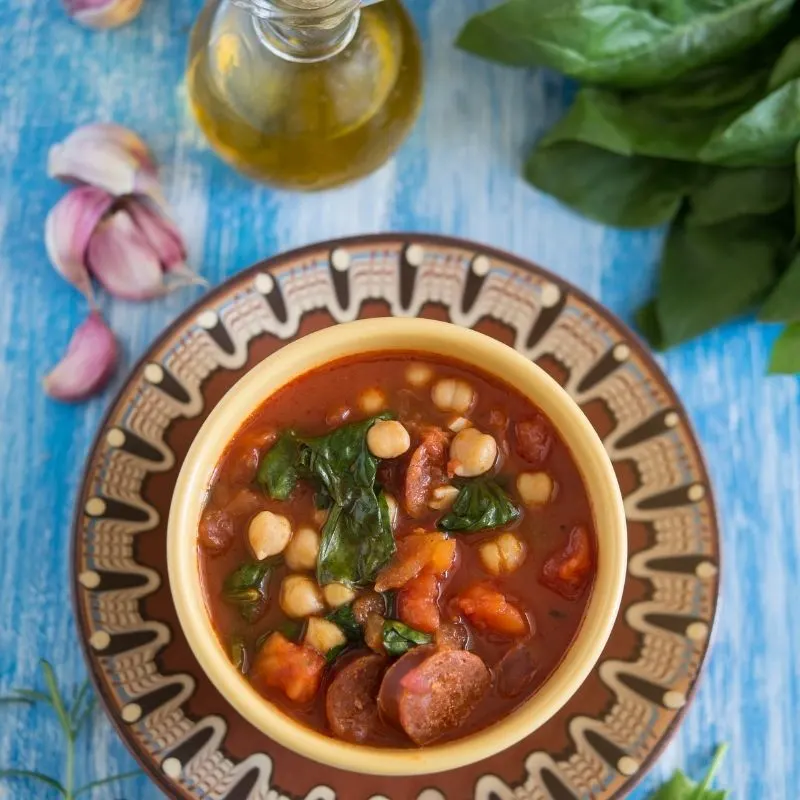
You, dear reader, support this blog. If you purchase through a link, we earn a small commission. As an Amazon Affiliate, we earn from qualifying purchases.
In this article, we will show you how you can make this stew in the comfort of your home and different tricks that will ensure success while preparing the recipe.
Without further ado, grab your best pot and get ready to whip up the iconic chickpea stew.
Pssst…!!?? You can’t get enough of Spanish soup recipes? Have a look at my other posts:
Background of the Dish
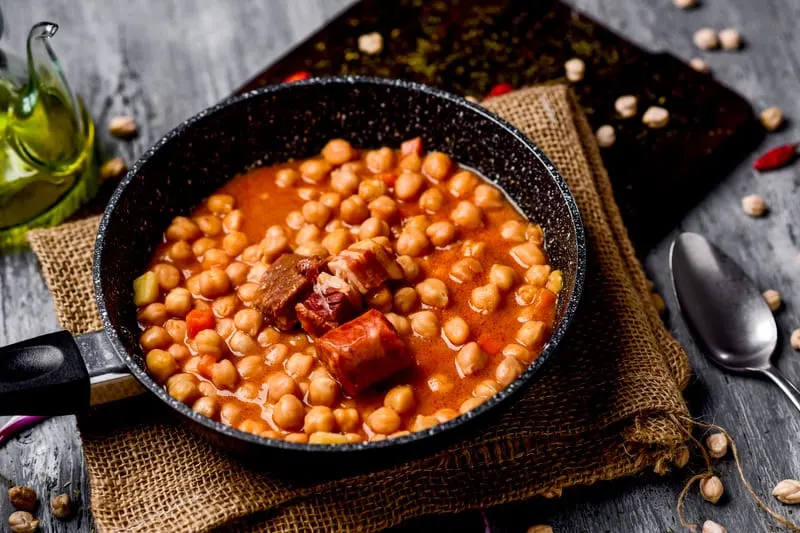
The Spanish stew is a recipe that has existed for centuries, and that in its beginnings was transmitted from generation to generation among the people of Andalusia.
For this reason, even today most people learn how to make this recipe from their grandmothers or mothers.
Something that makes it stand out from other traditional dishes from Spain with chickpeas is that it has other ingredients that go great with it.
For example, this Spanish chickpea stew calls for chard or spinach, and other types of classic Andalusian cuisine ingredients such as chorizo or bacon.
This dish is usually eaten throughout the year, but it is also frequently served during Easter. At that time, pork or beef is changed to some type of white fish such as cod or hake.
Here is the recipe for the authentic Potaje de Vigilia recipe, which is usually served around Easter in Spain.
However, remember that you can make this stew whenever and however you want.
Pin for later!
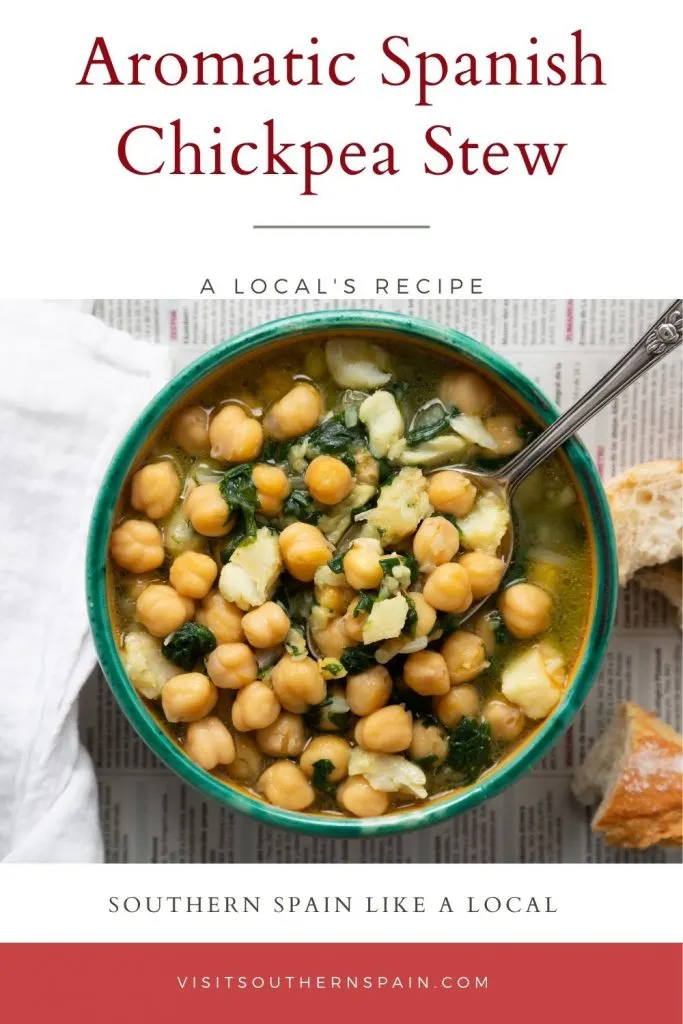
Things You’ll Need for Spanish Chickpea Stew
Like other chickpea dishes, this Spanish stew is one of the easiest to make and you only need a few key ingredients.
Also, a pot and a cutting board are enough equipment, so don’t have an excuse not to do it.
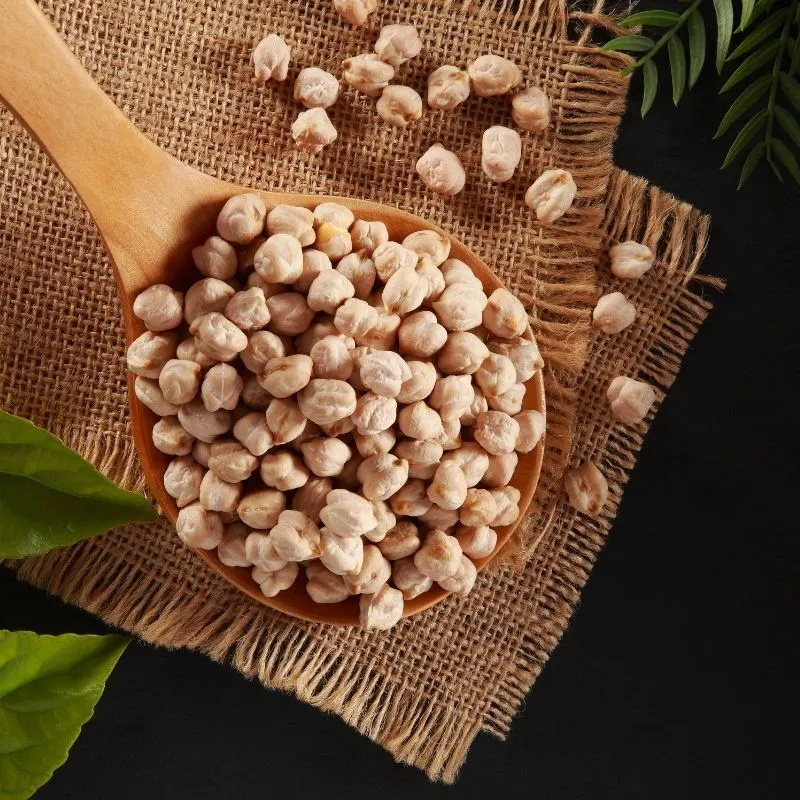
Ingredients
- 600g of Castilian chickpeas
- 2 garlic cloves
- 2 large onions
- 1 bay leaf
- 1 teaspoon paprika
- Salt and pepper to taste
- 4 tablespoons extra virgin olive oil
- 2 large tomatoes
- 2 sausages and a black pudding
- 150g cured pancetta
- Water (to cover your pot)
- 450 g spinach, cleaned (they can be frozen)
How to Make Spanish Chickpea Stew – Step by Step Guide
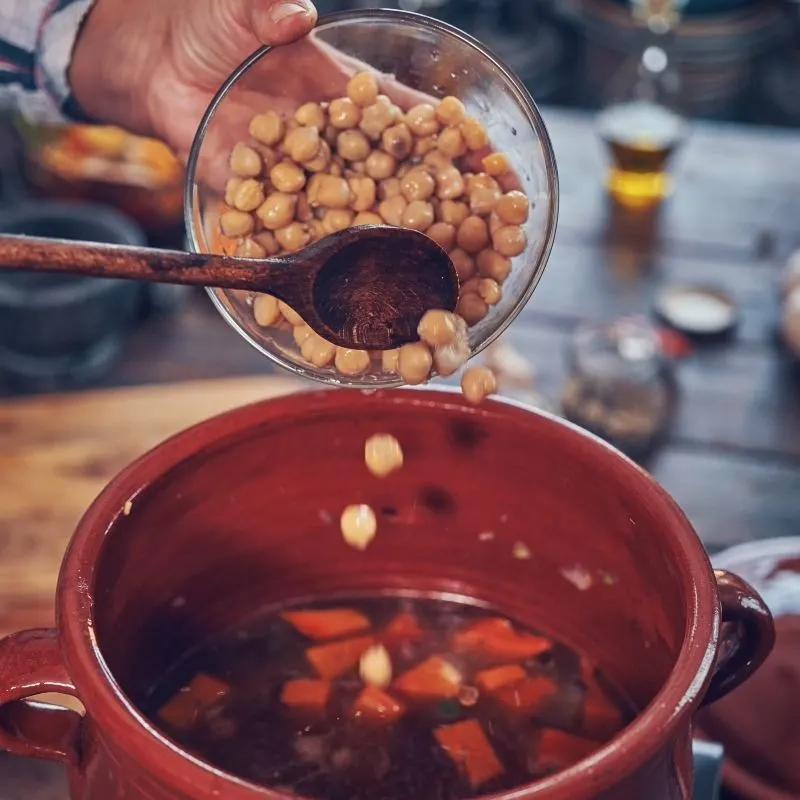
- The first step in this Spanish chickpea stew recipe is to fill a pot with cold water up to half more or less, just remember that you will have to add more ingredients. Once it starts to boil, lower the heat, add the chickpeas, and a little more hot water until they are completely covered.
- You should get tender chickpeas without falling apart, and a creamy and smooth texture on the inside.
- After 30 minutes of cooking them, add salt and pepper to taste. If you see that the stew is short of water, add a little more until it is covered again.
- Then add 2 chorizos, a black pudding, and a piece of bacon. Let them cook slowly over medium heat for the next 20 minutes. Stir occasionally with a wooden spoon. Once they are ready, remove the chorizos, blood sausage, and bacon so that the stew does not have that much fat.
- Grab another saucepan, and blanch the spinach to remove the bitterness. To blanch them, add boiling salted water and add and remove the vegetable in a quick movement.
- On a wooden or silicon board, chop the blanched spinach and add them in the last 10-15 minutes of cooking the stew. It should be on low heat, and you have to check it from time to time.
- Serve hot with the chorizo, black pudding, and bacon sliced and placed on top.
Substitution of Ingredients
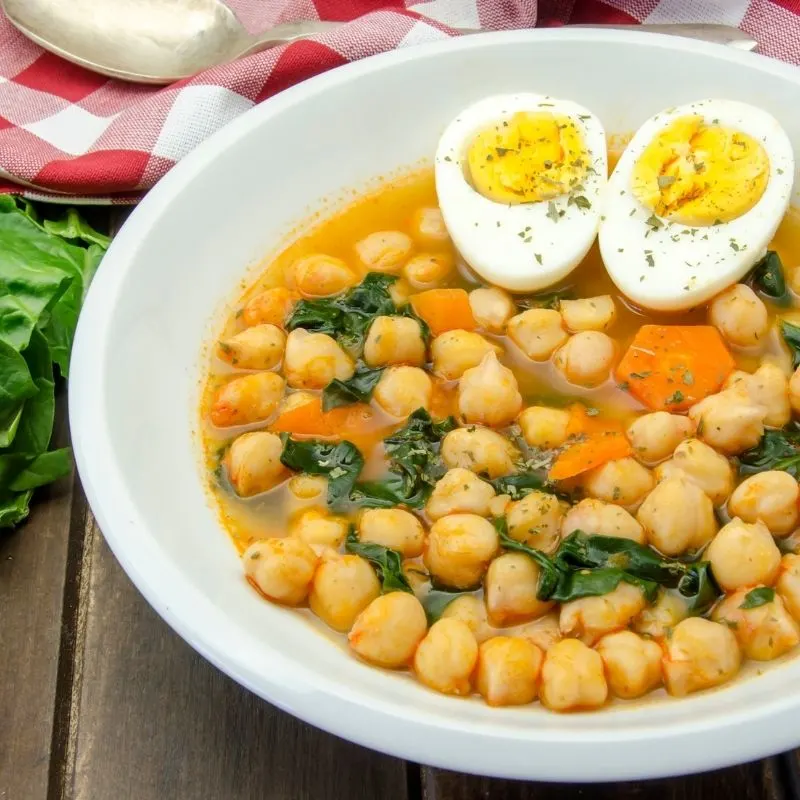
One of the highlights of all soup or stew recipes is that they allow you to make hundreds of changes.
If you think about it, there are different chickpea stew recipes, so you can inspire yourself from them and do whatever you want with the ingredients.
For example, you can turn this recipe into a vegan chickpea stew by removing the bacon, black pudding, and sausage.
To give it something extra, you can cut vegan cheese cubes or add bread croutons on top of the Spanish chickpea stew.
As for the sausage, it is always recommended to use chorizo for the typical chickpea and spinach stew, but since in this case it already has bacon, the chorizo can make everything very greasy.
So you can use any type of sausage you want.
Related recipes:
- Easy Spanish Pork Stew – Olla Gitana Recipe
- Appetizing Spanish Seafood Stew
- Spanish chicken stew
- Best Spanish Oxtail Stew Recipe
- Nourishing Spanish Lentils Recipe
- Best Spanish Summer Stew – Pisto Manchego
- Best Spanish Vegetable Stew
- Rich Spanish chickpea soup
Tips on Serving Spanish Chickpea Stew
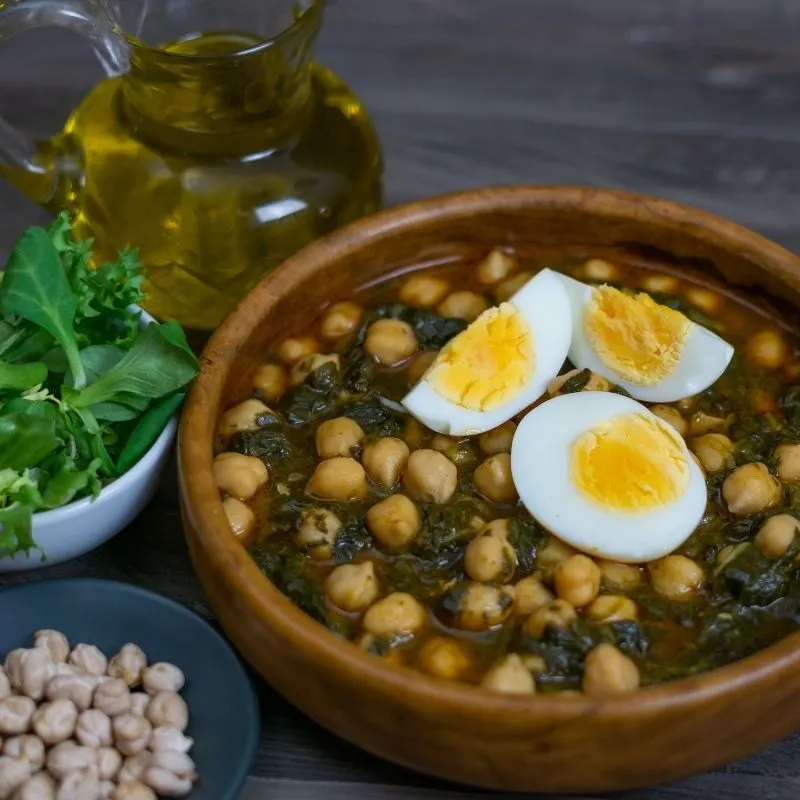
For serving this spinach stew one of my favorite things to do is to shred some parmesan cheese on top and let it melt with the heat of the stew.
You can also add some mozzarella cheese pieces inside the stew and a boiled egg on top.
If you want to innovate in the world of stews, you can take inspiration from other garbanzo recipes, and add a drizzle of olive oil on top, as you would do with the classic hummus.
How to Store Spanish Chickpea Stew
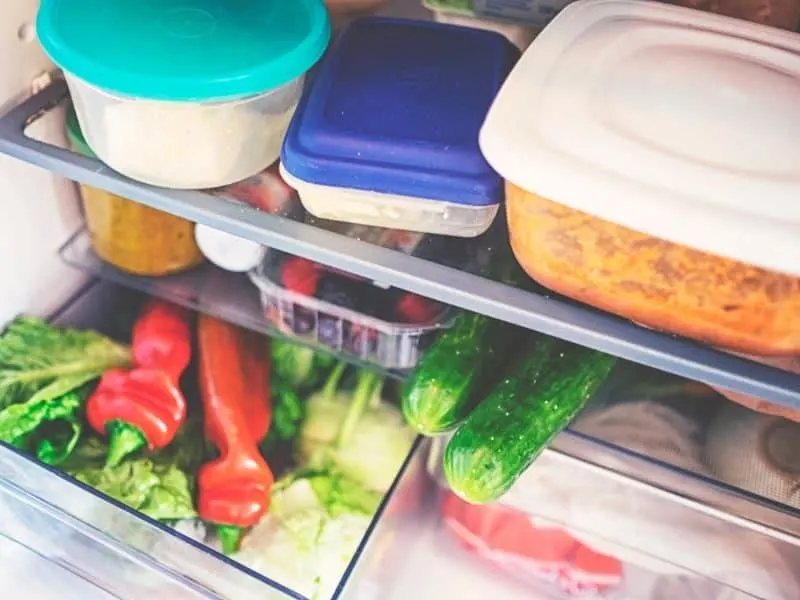
If you are familiar with another recipe for chickpeas, you might know that it is not always recommended to freeze them.
However, for these stewed chickpeas, you can store them in your freezer for up to 1 month and everything will be alright.
Just store them in a covered container and let them thaw overnight before consuming them.
The spinach and chickpeas will taste just fine, and all you will have to do is to heat them in the microwave or the stove.
Recipe Card: Spanish Chickpea Stew
Spanish Chickpea Stew Recipe
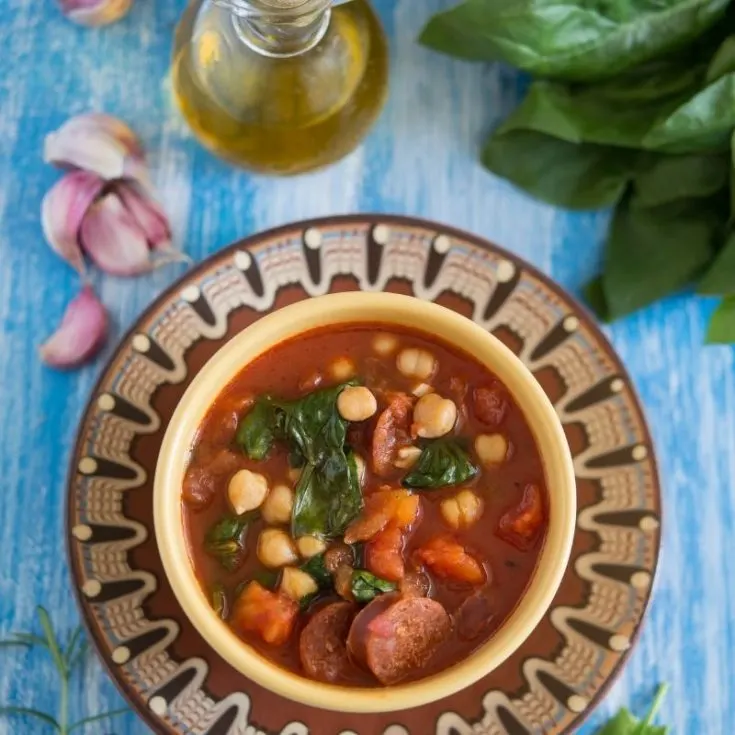
There are some dishes that make you travel just by tasting them or smelling their aroma.
Just one spoonful of Spanish chickpea stew can take you to the south of Spain in an instant.
This recipe is extremely popular due to its simplicity and the fact that the result is a delicious and heartwarming stew.
Ingredients
- 600g of Castilian chickpeas
- 2 garlic cloves
- 2 large onions
- 1 bay leaf
- 1 teaspoon paprika
- Salt and pepper to taste
- 4 tablespoons extra virgin olive oil
- 2 large tomatoes
- 2 sausages and a black pudding
- 150g cured pancetta
- Water (to cover your pot)
- 450 g spinach, cleaned (they can be frozen)
Instructions
- Cover a pot with cold water up to half more or less, remember that you have to add more ingredients. When it starts to boil, lower the heat, add the chickpeas, and a little more hot water until they are covered.
- You should get tender chickpeas without falling apart, and a creamy and smooth texture on the inside.
- After 30 minutes of cooking, add salt and pepper to taste. And if you see that the stew is short of water, add a little more until it is covered with water.
- Add 2 chorizos, a black pudding, and a piece of bacon. Let them cook slowly over medium heat for the next 20 minutes. Stir occasionally with a wooden spoon. Then remove the chorizos, blood sausage, and bacon so that the stew does not have so much fat.
- In another saucepan, blanch the spinach to remove the bitterness a little. To whiten, add boiling salted water and add and remove the vegetable in a fast movement.
- On a board, chop the blanched spinach and add them in the last 10-15 minutes of cooking the stew. It should be on low heat, and you have to check from time to time.
- Serve hot with the chorizo, black pudding, and bacon sliced and placed on top.
Notes
The stars of this stew are the chickpeas and spinach, but you can play with the different ingredients, adding more vegetables or seasonings.
If you cook it over low heat then it is a simple recipe to make. If you feel comfortable, you can do it over high heat, but constantly check the pot because it is very easy for it to spoil.
Nutrition Information
Yield
6Serving Size
1Amount Per Serving Calories 268Total Fat 10.3gSaturated Fat 3.4gCholesterol 23mgSodium 630mgCarbohydrates 32gFiber 6.6gSugar 3.7gProtein 13g
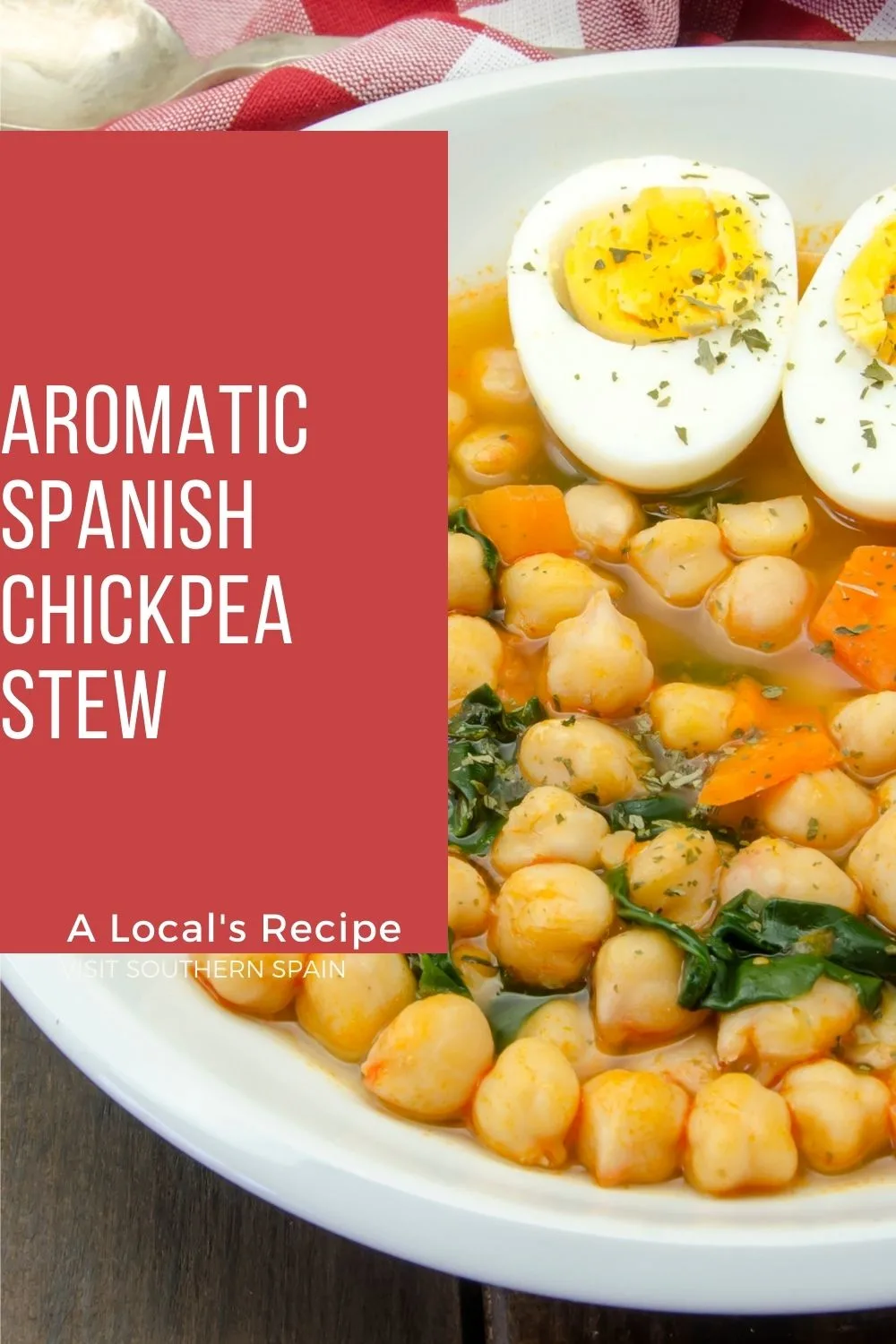
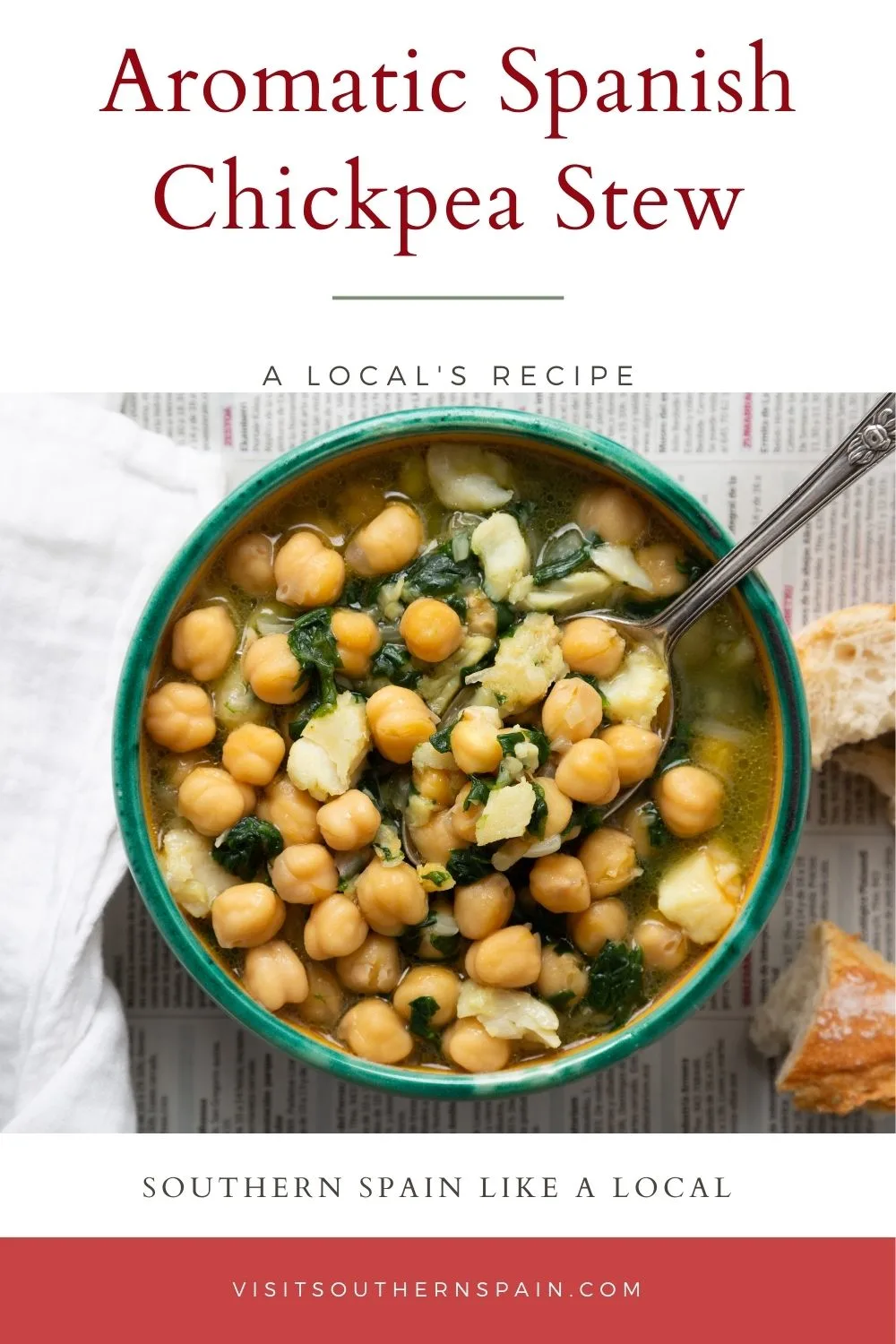

Hola, I’m Paulina! Together with my team, we are passionate about Southern Spain. Here we share all you need to know for great times in Southern Spain with the best places to visit, stay and, of course, the best food to eat.
Let’s dive in and explore Southern Spain’s outdoors, food and culture con pasión!

